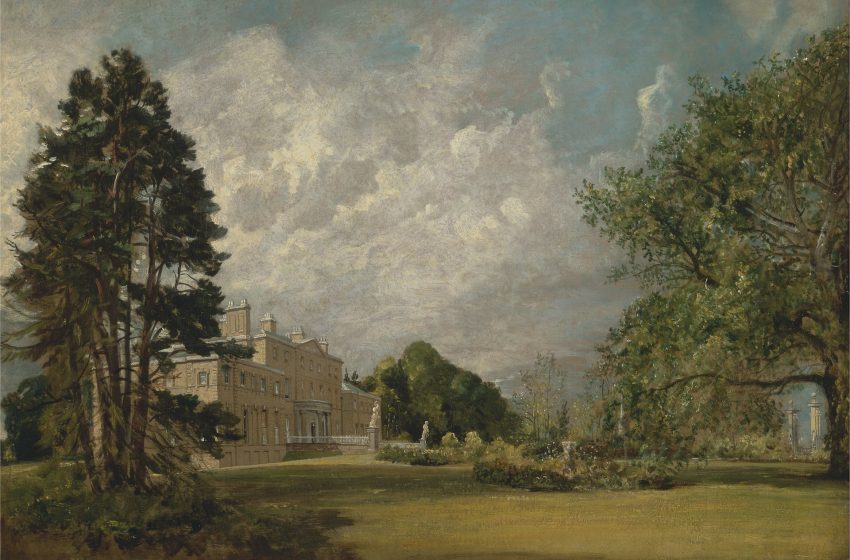
Early Paintings of John Constable
Painter John Constable was a prolific artist, well-known for his ever-grand landscapes. His eye for detail and creating realistic impressions with brushstrokes left everyone spell-bound.
Even today, many of John Constable’s paintings hold immense value and superior positions in different corners of the world. This is because many art galleries and museums have kept his painting as an artistic souvenir from the world’s greatest artist.
Keep reading about painter John Constable and his highly acclaimed masterpieces. Here is a list of some exclusively painted early paintings of John Constable that are eye delights for any art enthusiast.
The Hay Wain 1821
In 1821, John Constable brought to life this figurative reproduction of a landscape scenery inspired by a view in Suffolk, England. In its first-place appearance, the painting failed to attract spectators’ interest at the Royal Academy in 1821. Instead, it was an exhibition of famous romantic artists who gathered immense fame.
It is a fascinating landscape to understand the cataclysmic changes occurring in the English countryside back when the industrial revolution was at its peak. Then, developing machines and increased capitalism was the onset of changing the dynamics of people and nature around them.
Artist Constable showcased his impeccable impressionist techniques and made this iconic piece with so much dedication. The visual imagery of this painting is full of vistas that link to the irony of changing phases of nature. In addition, the depiction of the rural world over the urban lifestyle is demonstrated as a symbol of moral purity.
A Cottage in a Cornfield, 1817
A Cottage in a Cornfield – John Constable
Done in the year 1817, A Cottage in a Cornfield is a beautiful oil-on-canvas by John Constable. Mostly, John Constable artist preferred to use large-scale canvases, which he referred to as six-footers. But, this creation of the cornfield landscape was much smaller than his other paintings.
The reproduction measures 31.5 by 26.3 cm and 12.4 by 10.3 inches. It is a highly creative and stunning piece made with a colorful palette. He played with colors, ideally using his deep insights into greens, blue, gray, yellow, and browns. On the bottom side of the portrayal, one can see a patch of grass and a fence in front of a house. You cannot miss the two donkeys at the correct entrance.
A tree arising from the grass ends on the top of the canvas, creating an exciting rhythm with many beautiful white flowers. Beyond flowers is the explicit and radiating cornfield. It creates a luminous picture, and in the center lies a cottage.
The house is done in warm yellows, browns, and gray shades. Trees can be seen on either side of the house, and the distant ones are colored bluish-green. The sky has white clouds on a sunny day painted with subtle tones of blue.
Wivenhoe Park, Essex
Hailed as the master of landscape painting, John Constable, another classic oil painting is Wivenhoe Park, Essex. It was done in 1916 and is presently a valuable souvenir in the National Art Gallery’s collection, considering the dimensions of this 56.1cm by 101.2cm, 22 inches by 39.7 inches.
The painting illustrates John’s extraordinary talent for showcasing attention to detail. The rendition of vegetables and bringing alive the sensation of sunny day vibes depicts his expertise in playing with colors, shadows, and light. The composition seems like someone has clicked a snapshot of a colorful park.
Spectators can see a cattle field with a couple of fishermen working at the lakeside. One-third of the painting is terrestrial with yellowish-green shades. The second half is represented by lakeside done with greens, gray, and browns. Farther away from it are so many trees and a big red-colored house.
The sky has been colored with utmost attention, which creates a composite alternation between the clouds and the sky. It seems as if the clouds are in motion on a regular sunny day due to windy weather. Overall, the painting is brought to life with small and thick brushstrokes with a sheer amount of details.
Salisbury Cathedral from the Bishop’s Grounds, 1825
Salisbury Cathedral from the Bishop’s Grounds – John Constable
British artist John Constable’s Salisbury Cathedral from the Bishop’s Grounds, is another characteristic landscape based on the detailed observation of a real-life setting. The painting is a high-immersion of a careful rendition of the Salisbury Cathedral.
On the bottom left side of the masterpiece is a road that leads to the entrance of the Cathedral. It is painted with various shades of brown, contrasting with a naturalist approach when exposed to sunlight. The trees are painted to grab the viewer’s attention, created with dynamic composition and emphasizing the audience in the Cathedral.
The painting shows the diversity and beauty of the British flora, textural trunks, fungi grown, and bright painting molds. The tree branches express a gestural approach, and the branches are done with alla prima, with rough and direct strokes. The imagery is primarily light and cold, with the ultimate hues of blue, green, and white in their most presentable form.
Breaking with explicit details such as the yellow mushrooms in the trees close to the pond and the rosy red flowers on the bottom left. There is an exciting arrangement of clouds through which linen on the canvas is visible. Although, some spots can be seen giving it a rough quality.
The Bottom Line
Drawings of Constable carry immense importance in all parts of the world. They are a mark of luxury and a collection from one of the most successful British artists. You can easily buy replicas of John Constable paintings online.
